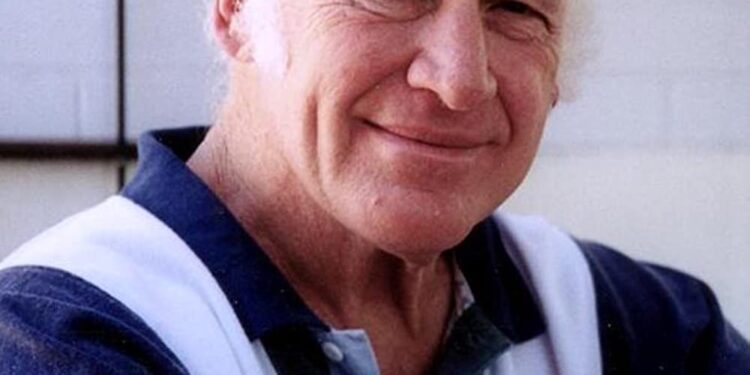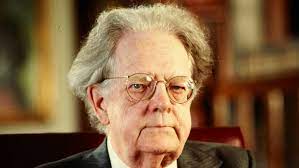Ken Kesey Biography and Work
Ken Kesey (1935-2001) was an American novelist, essayist, and countercultural figure, best known for his novel “One Flew Over the Cuckoo’s Nest.” He was also a central figure in the psychedelic movement of the 1960s and was the leader of a group known as the Merry Pranksters, who famously drove across the United States in a painted bus called “Further.”
Early Life and Education
Ken Kesey Biography and Work:-Ken Kesey was born on September 17, 1935, in La Junta, Colorado. He grew up in Springfield, Oregon, and attended the University of Oregon, where he studied journalism and creative writing. While at the university, he became a star athlete and won several awards for his wrestling and football skills.
After graduating from the University of Oregon in 1957, Kesey moved to California, where he enrolled in a creative writing program at Stanford University. It was during his time at Stanford that Kesey became interested in the use of drugs, particularly LSD, as a way to expand consciousness and explore alternate realities.
Also Read:-
- Ernest Hemingway Biography and Work
- John Keats Biography and Work
- Lord Byron Biography and Work
- Salman Rushdie Biography and Work
Writing Career
Ken Kesey Biography and Work:-Kesey’s first novel, “One Flew Over the Cuckoo’s Nest,” was published in 1962. The book tells the story of a group of patients in a mental hospital and their battle against a tyrannical nurse. The novel was an immediate critical and commercial success, and it won the 1963 National Book Award for Fiction. In 1975, it was adapted into an Academy Award-winning film starring Jack Nicholson.
Ken Kesey Biography and Work:-Kesey’s second novel, “Sometimes a Great Notion,” was published in 1964. The book is set in a small logging town in Oregon and tells the story of a family feud between two logging companies. The novel was also well-received and was nominated for the National Book Award.
Kesey’s later novels, including “Kesey’s Garage Sale,” “Demon Box,” and “Sailor Song,” were not as successful as his earlier works, but they still demonstrated his unique voice and experimental style.
The Merry Pranksters
In 1964, Kesey and a group of friends, who called themselves the Merry Pranksters, set out on a cross-country journey from California to New York in a painted bus called “Further.” The trip was chronicled in Tom Wolfe’s book “The Electric Kool-Aid Acid Test,” which became a classic of New Journalism.
Ken Kesey Biography and Work:-The Merry Pranksters were known for their use of psychedelic drugs, their wild and often anarchic behavior, and their embrace of the countercultural values of the 1960s. The group became a symbol of the emerging hippie movement, and Kesey became one of its leading figures.
Later Life and Legacy
In 1965, Kesey was arrested for possession of marijuana. Rather than serve his sentence, he fled to Mexico and then to Canada, where he lived for several years. He eventually returned to the United States and served a brief sentence in a California prison.
After his release, Kesey continued to write and perform, but he was never able to recapture the success of his early novels. He died on November 10, 2001, at the age of 66, from complications of liver surgery.
Ken Kesey Biography and Work:-Despite the ups and downs of his career, Kesey remains an important figure in American literature and counterculture. His novels continue to be read and studied, and his influence can be seen in the work of many contemporary writers. He is remembered not only for his literary achievements but also for his role in shaping the cultural landscape of the 1960s.
Themes and Style
Themes:
Ken Kesey’s writing is characterized by a deep interest in the human mind and the ways in which it can be expanded and altered. This interest is reflected in his exploration of themes related to mental illness, identity, conformity, and rebellion.
- Mental Illness: Kesey’s most famous novel, “One Flew Over the Cuckoo’s Nest,” explores the theme of mental illness and the institutionalization of those who suffer from it. The novel portrays the mental hospital as a place where individuality and freedom are suppressed in favor of conformity and control.
- Identity: Kesey’s writing often explores the theme of identity, particularly in relation to the individual’s struggle to assert their unique self in the face of societal pressure to conform. In “One Flew Over the Cuckoo’s Nest,” the character of McMurphy embodies this struggle, as he fights against the authority of the hospital and the conformity it represents.
- Conformity and Rebellion: Kesey’s work is often concerned with the tension between conformity and rebellion. His characters frequently find themselves in conflict with societal norms and expectations, and must choose whether to conform or rebel. This tension is particularly evident in “One Flew Over the Cuckoo’s Nest,” where the characters’ rebellion against the oppressive authority of the mental hospital is a central theme.
Style:
Kesey’s writing style is characterized by a sense of playfulness and experimentation. He often uses unconventional narrative techniques and employs a variety of voices and perspectives.
- Unconventional Narratives: Kesey’s novels often employ unconventional narrative techniques, such as stream-of-consciousness writing, shifting perspectives, and non-linear plot structures. In “One Flew Over the Cuckoo’s Nest,” for example, the story is told from the perspective of the character Chief Bromden, who is an unreliable narrator due to his mental illness.
- Multiple Voices: Kesey frequently employs multiple voices and perspectives in his writing, creating a sense of fragmentation and disorientation. In “Sometimes a Great Notion,” for example, the story is told from the perspectives of several different characters, each with their own unique voice and viewpoint.
- Experimental Language: Kesey’s writing is characterized by its experimental use of language and its embrace of the vernacular. He often uses slang, colloquialisms, and invented words to create a sense of playfulness and to challenge conventional literary norms.
- Ken Kesey Biography and Work:-Overall, Kesey’s writing style is characterized by its innovative and experimental nature, its embrace of non-conformity, and its exploration of the human mind and the ways in which it can be expanded and altered.
Conclusion
Ken Kesey was a highly influential writer whose work continues to captivate readers with its exploration of the human mind, identity, conformity, and rebellion. Through his novels, particularly “One Flew Over the Cuckoo’s Nest,” Kesey challenged conventional literary norms and experimented with narrative techniques and language. His writing is marked by a sense of playfulness, fragmentation, and disorientation, which serve to immerse readers in his characters’ experiences and challenge them to think deeply about the themes he explores. Kesey’s impact on American literature cannot be overstated, and his legacy continues to inspire new generations of writers and readers.
FAQ.
Q. What was Ken Kesey’s most famous novel?
Ans. Ken Kesey’s most famous novel is “One Flew Over the Cuckoo’s Nest,” which was published in 1962.
Q. What is “One Flew Over the Cuckoo’s Nest” about?
Ans. “One Flew Over the Cuckoo’s Nest” is a novel about a group of patients in a mental hospital who rebel against the oppressive authority of the head nurse, Nurse Ratched. The novel explores themes of mental illness, identity, conformity, and rebellion.
Q. Was Ken Kesey associated with the counterculture movement of the 1960s?
Ans. Yes, Ken Kesey was associated with the counterculture movement of the 1960s. He was a part of the Merry Pranksters, a group of people who embraced an experimental and often drug-fueled lifestyle, and he was known for his advocacy of psychedelic drugs such as LSD.
Q. Did Ken Kesey write any other novels besides “One Flew Over the Cuckoo’s Nest”?
Ans. Yes, Ken Kesey wrote several other novels, including “Sometimes a Great Notion,” “Demon Box,” and “Sailor Song,” among others.
Q. What was Ken Kesey’s legacy?
Ans. Ken Kesey’s legacy is that of a highly influential writer who challenged conventional literary norms and pushed the boundaries of what was possible in literature. His exploration of themes related to the human mind, identity, conformity, and rebellion continues to resonate with readers today, and his influence can be seen in the work of many contemporary writers.

















